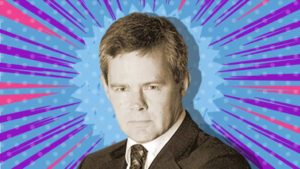‘How big can this thing be?’ Four mining experts on what they think of Chalice’s ‘world class’ Julimar resource

Pic: Bloomberg Creative / Bloomberg Creative Photos via Getty Images
The largest nickel sulphide discovery in 20 years. The largest PGE group discovery in Australia, ever.
At a whopping 1.9Mt of nickel equivalent in resource or 17Moz palladium equivalent, Chalice Mining’s (ASX:CHN) Gonneville is a monster.
That news drove Chalice shares up 28.5% or $1.93 to $8.70.
The long awaited maiden resource was released yesterday, more than 18 months after a stunning discovery hole that identified the first economic platinum and palladium resources in Australia.
In that period Chalice’s share price has multiplied more than 50 times over, driving the company to a valuation of more than $3 billion.
According to Chalice, Gonneville contains 330Mt of ore at 0.94g/t platinum, palladium and gold, 0.16% nickel, 0.1% copper and 0.016% cobalt (0.58% nickel equivalent or 1.6g/t palladium equivalent).
A higher grade component includes 74mt at 1.8g/t Pd-Pt-Au, 0.22% nickel, 0.21% copper, 0.021% cobalt for a 1% nickel or 2.8g/t palladium equivalent.
Chalice Mining share price today:
Gonneville opens a new mineral province
Gonneville was discovered on the western margin of the Yilgarn Craton, a geological feature known for its bountiful deposits of gold and nickel in the Eastern Goldfields around Kalgoorlie, but little tested closer to Perth.
That Chalice in 2020 made a discovery just 70km northeast of the state capital of Perth where few explorers before had thought to look is one of the romantic aspects of the story.
There remains more to be found as well, with Chalice saying Gonneville is still open at depth and contains just 7% of the 26km strike length of the Julimar project, not to mention the other regional ground along the west Yilgarn locked up by nearologists and Chalice itself.
Chalice is due to deliver a scoping study that will put more concrete numbers around Julimar by the middle of next year.
But the market is already lapping up a feel-good story that blends the eureka moment and rags to riches tropes with a modern twist of mining the ‘green metals’ to supply technologies that will replace fossil fuels.
While nickel and copper are well understood in Australia, much of Julimar’s aura comes from its large deposits of palladium and platinum, or platinum group elements.
Try as Australian explorers might, these exotic elements found primarily in Russia, South Africa and Zimbabwe and used in technology like fuel exhausts and electrolysers have long eluded our rock kickers.
One prominent tale involves Western Mining Corporation’s heavy promotion of what it called WA’s first PGE discovery with junior Falcon Minerals at Collurabbie near Wiluna in the mid 2000s.
It was largely seen as a marketing exercise to beef up its takeover defence against suitor X-Strata before BHP came over the top to snare WMC, quietly jettisoning the Falcon JV some years later. Falcon later became a 3D printing company.
But Julimar looks to be the real deal.
After yesterday’s market reaction we asked four respected geologists and mining experts just how good Gonneville is.
KEITH GOODE (EAGLE RESEARCH ADVISORY)
Geologist and mining analyst Keith Goode of Eagle Research Advisory follows the platinum industry, dating back to his time as an analyst with South Africa’s Impala Platinum.
He called the Gonneville resource as the best he’s seen.
Compared to platinum and palladium orebodies in South Africa, he said Chalice’s copper and nickel grades were far higher than the norm.
“It’s the best I’ve ever seen,” he said.
“So in terms of PGE orebodies, if I compare it to South Africa, typically you have two payable roofs, whereas this one’s got about 11.
“And usually in PGE orebodies, your copper and nickel grades are very low, as in like the third or second decimal place.”
Goode said the early indications were that it will likely be simple to process as well, lending itself to a simple flotation process to produce a mixed metals concentrate.
“It’s just straightforward flotation to a concentrate, they’re going to examine the downstream options too as they said, doing mid enrichment,” he said.
“You wouldn’t go to final metal and produce individual PGEs. That’s usually a very specialised area.”
HEDLEY WIDDUP (LION SELECTION GROUP)
Hedley Widdup, known for his mining investment clock, is more cautious.
He said Chalice deserved “a huge amount of kudos” for making a greenfields discovery in an untested area, but remains cautious on the valuation of a company still at the maiden resource stage.
“I have marvelled at Chalice’s progress in the market a bit – not because I begrudge it and certainly not because I think it’s fundamentally flawed, only because the market has bought it so willingly,” he said.
“It’s capitalised right now at over $3 billion – I can’t think of another single project, maiden resource stage (in fact yesterday it was a $2.4bn pre-resource explorer) company that has achieved that sort of valuation.
“And I am sure this is a point of debate for many index guided funds – how do you get comfortable with a company that is in your tracking index but has a totally different risk profile to the (mainly cash producing) other index constituents?
“It surely has some qualities that lend themselves to investors getting very hot and frothy over it, especially in a market that is ravenous for growth.”
Widdup said a number of factors were in Chalice’s favour, including the scale and size of the maiden resource and the opportunity to promote its pipeline beyond that, its location and the fact the orebody was found just 70km from Perth as the world entered a pandemic and WA prospered in its isolation.
However, Widdup noted there were still a lot of unknowns around the project.
“It’s not high grade, the product is multi-metal concentrates, and I don’t yet understand how metals content/mixture might vary between and within the individual zones they show on sections and maps,” he said.
“This might not be an issue – but I bet it’s an area the company are working hard to understand for themselves.
“Combined metals mean two commercialisation scenarios – sale of concentrate(s) or on-site purification of key metals.
“Clearly the former is the lower capital of the two by a fairly long way so I suspect the latter is well beyond contemplation for now.
“The value of this project will be way more complicated than metal value out the gate minus operating and amortised capex costs.”
GAVIN WENDT (MINELIFE)
Mining analyst Gavin Wendt said Chalice had “well and truly surprised on the upside”, with its maiden resource announcement.
“This is great news, as typically these sorts of maiden resource pronouncements can leave the market underwhelmed,” he said.
“Market expectations can be built up to such lofty levels that companies cannot possibly manage to deliver on expectations.
“In the case of Chalice, the story is very different. The key strengths of the Julimar deposit are both scale and grade, and these have been confirmed in the maiden resource estimate.”
Wendt says the near surface, high grade component of the Gonneville resource, which extends over an area of 1.9km by 900m and where mineralisation has been found to a depth of 630m, would make the early economics of the project more robust.
“The characteristics of the deposit are crucial – as there is a high-grade zone that lies within 30 metres of the surface, allowing for robust economics during the initial years of project development, thus boosting project returns and payback in the early stages, which in return helps reduce project risk,” he said.
“This will help further differentiate Chalice from its peers in the minds of investors and justifies the significant premium that it has attracted in the market.
“Chalice also continues to offer enormous exploration ‘blue sky’, as evidenced by the fact that the current resource remains open, so far covering with only 7% of the 26km long Julimar Complex.
“This is what will really excite investors from a big picture perspective. How big can this thing be?”
JON HRONSKY (WESTERN MINING SERVICES)
Jon Hronsky is a geologist famed for discovering the giant Nebo-Babel nickel-copper sulphide deposit on WA’s border with South Australia, now being developed by OZ Minerals (ASX:OZL) as the West Musgrave project.
He also has skin in the game as a director of West Yilgarn play Caspin Resources (ASX:CPN), which itself counts Chalice as a cornerstone shareholder.
On a nickel tonnes equivalent basis, he said Gonneville was in a league with West Musgrave and BHP’s Mt Keith mine, the largest nickel sulphide deposit mined in Australia.
“They reported this as 0.58% nickel equivalent,” Hronsky told Stockhead.
“Mt Keith when it was a development project, it was thought to be about 160 million tonnes at about 0.6%.
“I think the historical average grade was probably a bit lower than that, but also the tonnages went up a lot – but don’t quote me on that.
“I’m guessing it’s about 0.5%-0.6% or something like that.
“From a development point of view, the cost structure is going to be a lot better because it’s not remote but of course against that, they’ll obviously have to manage all the issues of being close to Perth, near State forest and so on.”
Hronsky has been a long-term advocate for the idea that greenfields exploration is needed to find the discoveries of the future at a time when companies were prioritising less risky brownfields exploration around existing mines.
“I see this as being significant on two levels,” he said. “One is that it’s opened up what we call the Western margin of the Yilgarn Craton.
“But at a more fundamental level, what this discovery does, it’s a little bit like what we did in the West Musgrave now more than 20 years ago.
“But it’s a conceptual discovery by a junior company, not a major company, but a junior company, who’s used these conceptual ideas.
“And obviously, they’ve looked at the data but they basically go into a new area, using scientific concepts, made a big discovery.
“I have a strong view that one of the reasons we didn’t make many greenfields discoveries for a long time is basically because we weren’t doing it. We weren’t doing the type of work that would get us into these new frontier areas.
“We were being very, very conservative with where the industry was focusing.
“It’s only when you go somewhere different and the frontier area doesn’t have to be in the middle of Australia. It can be, but it might just be in the backyard of an area that’s never actually looked at in a particular way.
“And I think that’s what Julimar and Gonneville is a great example of.”
Related Topics

UNLOCK INSIGHTS
Discover the untold stories of emerging ASX stocks.
Daily news and expert analysis, it's free to subscribe.
By proceeding, you confirm you understand that we handle personal information in accordance with our Privacy Policy.








